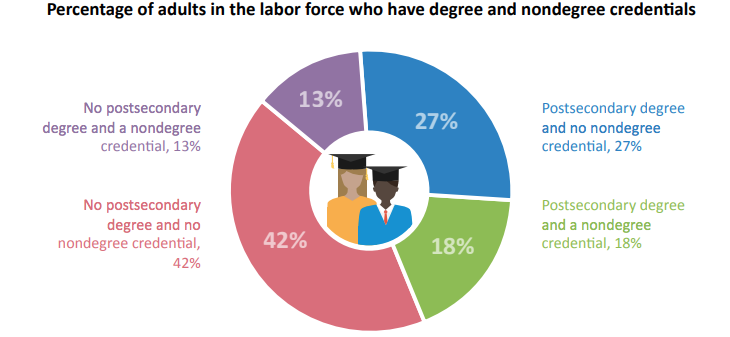
According to data recently released by the National Center for Education Statistics, most adults in the workforce (58 percent) either have a postsecondary degree or some other form of workforce credential, including postsecondary certificates, occupational licenses or occupational certifications. This is higher than the 45 percent of adult workers with postsecondary credentials using traditional measures that only looked at postsecondary degrees (associate degree or higher). Over one in 10 adult workers (13 percent) indicated that they had no postsecondary degree, but had some form of nondegree credential. Over half (56 percent) of the non-degreed adult workers who had one or more non-degree credentials had an occupational license; 43 percent had a postsecondary certificate, and 21 percent had an occupational certification. These data provide a better understanding of the diverse training background of the working adult population in the United States.
This data is presented in a Data Points infographic from the American Association of Community Colleges.
CoP note: This information suggests that postsecondary credentials, beyond postsecondary associate and bachelor’s degrees, are in high demand among adult learners. Such findings may inform future plans about programming, and may suggest microcredentials and other nontraditional methods of earning credentials may be part of adult pedagogy in the future. The SPCS Badging Working Group is looking into badging options at SPCS, and the SPCS Innovation Committee is also considering alternative credentials among its innovations to recommend to the dean. Read the Spring 2018 issue of Continuing Connections, the SPCS Dean’s Update, to learn more about the work of these committees and their relationship to implementing the SPCS Strategic Plan.